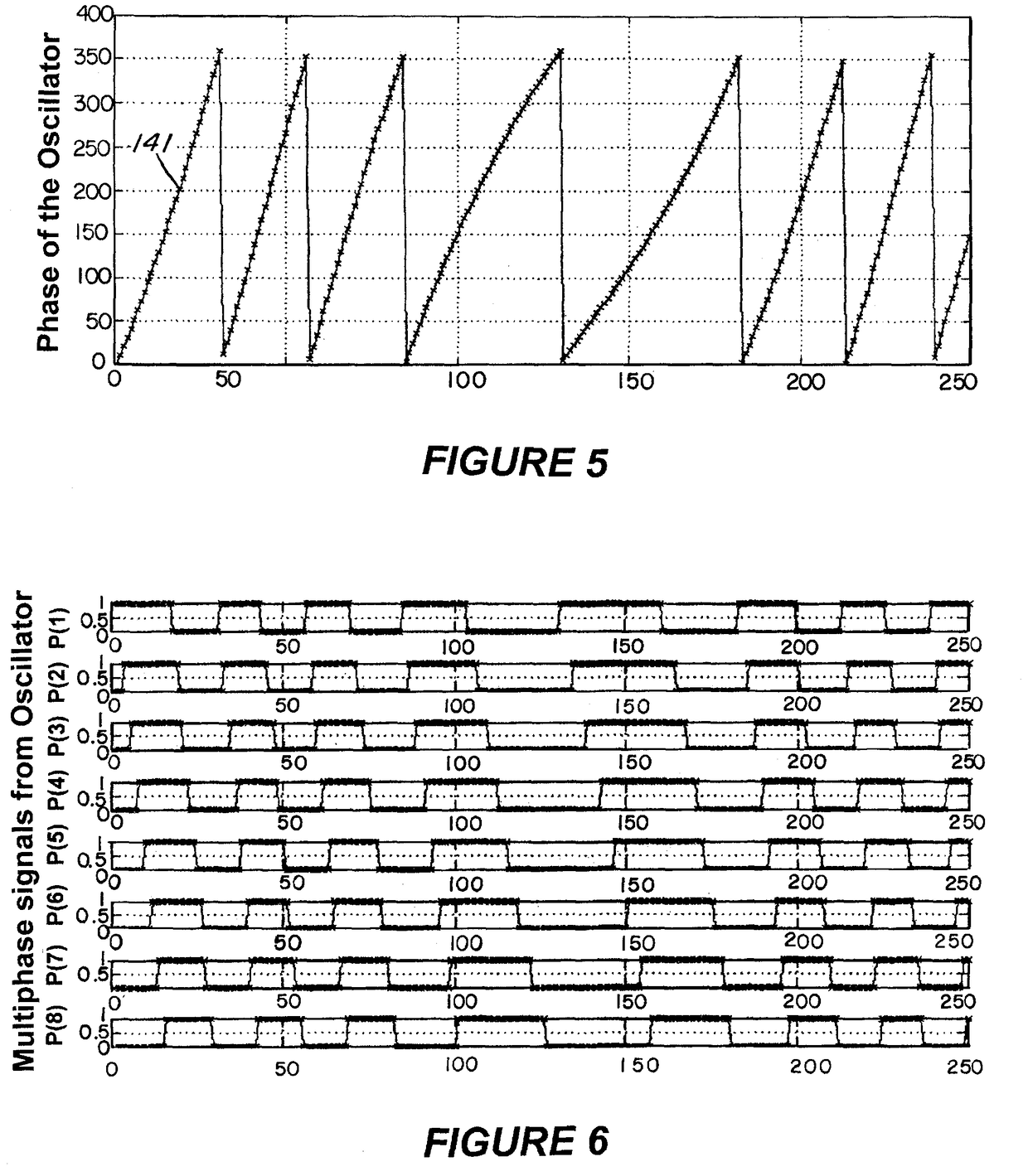Phase lock loop with a multiphase oscillator
a multi-phase oscillator and phase lock technology, applied in the direction of electrical equipment, automatic control, etc., can solve the problems of insufficient phase resolution, sensitive delay of inverters, and insufficient prior art phase determination techniques, etc., to achieve finer phase resolution, increase phase resolution, and high ring oscillation frequency
- Summary
- Abstract
- Description
- Claims
- Application Information
AI Technical Summary
Benefits of technology
Problems solved by technology
Method used
Image
Examples
Embodiment Construction
[0025]FIG. 1, shows a phase lock loop according to the present invention. A phase detector 11 receives a reference phase signal 41, a total phase signal 43, and a clock signal 45. The reference phase signal 41 represents a carrier frequency to lock to. The phase detector 11 compares the reference phase signal 41 to the total phase signal 43 upon receipt of the clock signal 45 and generates a control signal 47 which is proportional to the phase difference between the reference phase signal 41 and the total phase signal 43. Ideally the phase difference or error signal is zero.
[0026]A filter 13 receives the control signal 47 from the phase detector 11 and averages the control signal 47, generating a filtered control signal 49. A ΔΣ modulator 15 receives the filtered control signal 49 and performs a noise shaping function on the filtered control signal 49. The ΔΣ modulator 15 oversamples the filtered control signal 49 to push any noise within the filtered control signal 49 into a higher...
PUM
 Login to View More
Login to View More Abstract
Description
Claims
Application Information
 Login to View More
Login to View More - R&D
- Intellectual Property
- Life Sciences
- Materials
- Tech Scout
- Unparalleled Data Quality
- Higher Quality Content
- 60% Fewer Hallucinations
Browse by: Latest US Patents, China's latest patents, Technical Efficacy Thesaurus, Application Domain, Technology Topic, Popular Technical Reports.
© 2025 PatSnap. All rights reserved.Legal|Privacy policy|Modern Slavery Act Transparency Statement|Sitemap|About US| Contact US: help@patsnap.com



